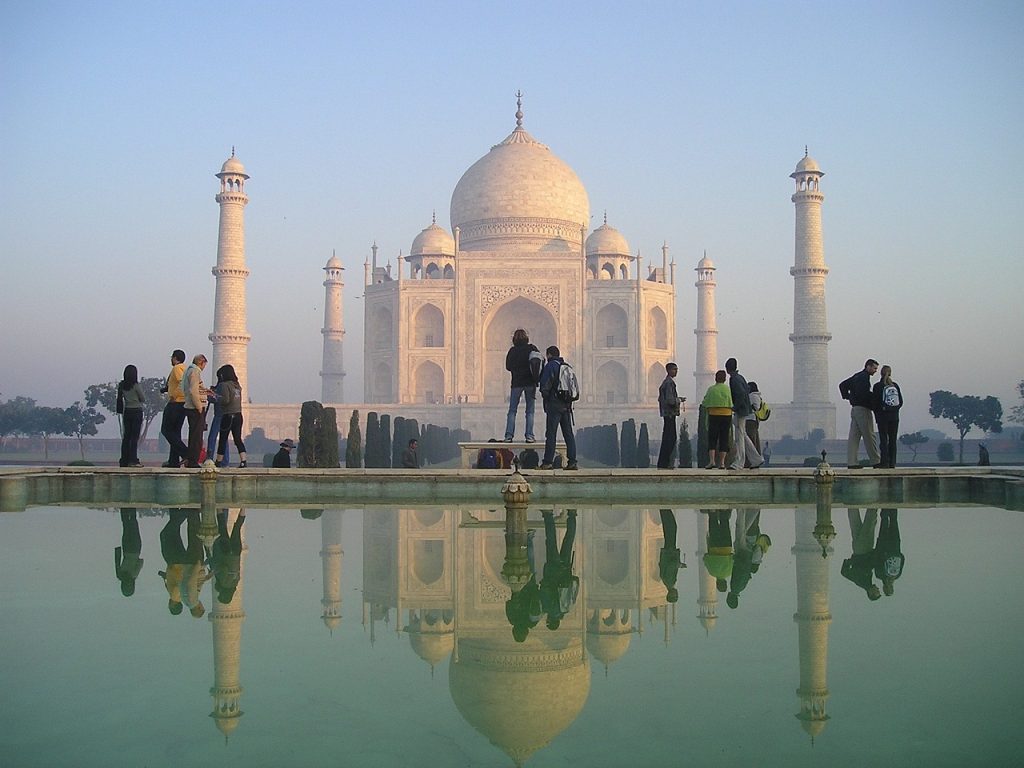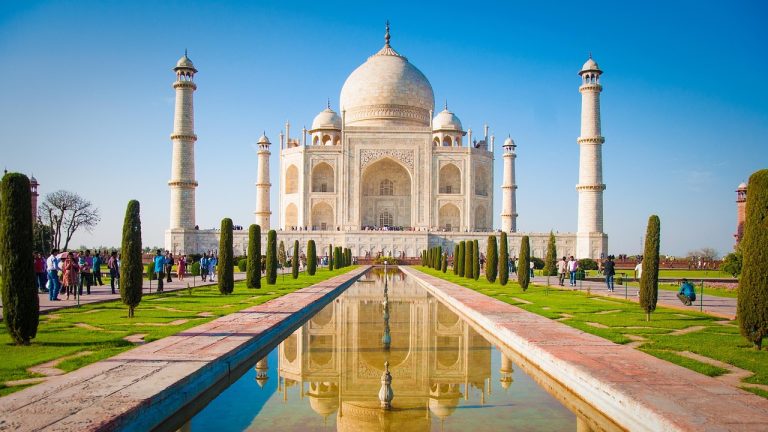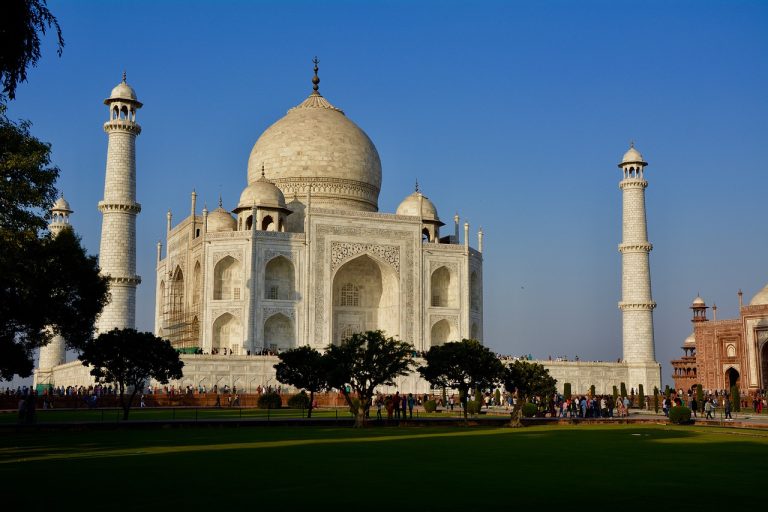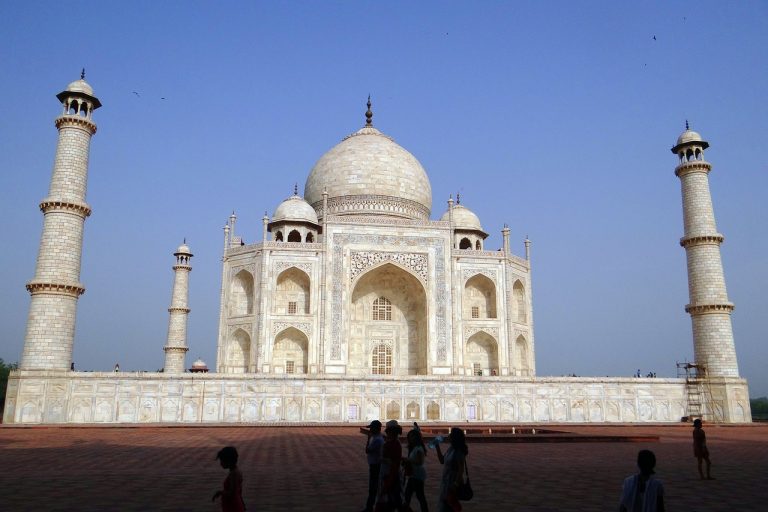Agra India Video
Architectural Wonders: Iconic Buildings in Agra India
Taj Mahal
The Taj Mahal is a UNESCO World Heritage Site and one of the most famous buildings in the world. It was built by the Mughal emperor Shah Jahan in the 17th century as a mausoleum for his beloved wife, Mumtaz Mahal. The Taj Mahal is renowned for its stunning white marble architecture and intricate detailing. It is considered a masterpiece of Mughal architecture and attracts millions of visitors each year.
- Key Features: Reflective pool, minarets, dome, calligraphy, gardens
- The reflective pool in front of the Taj Mahal creates a stunning visual effect, especially during sunrise and sunset.
- The minarets on each corner of the main building add to the grandeur of the structure.
- The central dome is one of the most recognizable features of the Taj Mahal, with its graceful proportions and intricate detailing.
- Calligraphy from the Quran is prominently displayed on the exterior walls of the mausoleum.
- The surrounding gardens provide a serene atmosphere and complement the beauty of the Taj Mahal.
Agra Fort
Agra Fort, also known as the Red Fort of Agra, is a historical fort located near the Taj Mahal. It was built by the Mughal emperor Akbar in the 16th century and served as the main residence of the emperors of the Mughal Dynasty until the capital was shifted to Delhi. The fort showcases a unique blend of Islamic and Hindu architectural styles.
- Key Features: Diwan-i-Am, Diwan-i-Khas, Jahangir Palace, Khas Mahal, Musamman Burj
- The Diwan-i-Am, or Hall of Public Audience, was where the emperor would address the public.
- The Diwan-i-Khas, or Hall of Private Audience, was used for private meetings and discussions.
- The Jahangir Palace was built by Akbar for his son Jahangir and showcases intricate stone carvings.
- The Khas Mahal served as the private residence of the emperor and features beautiful marble work.
- The Musamman Burj is a marble balcony where Shah Jahan was imprisoned by his son Aurangzeb, from where he could see the Taj Mahal.
Agra India Image 1: 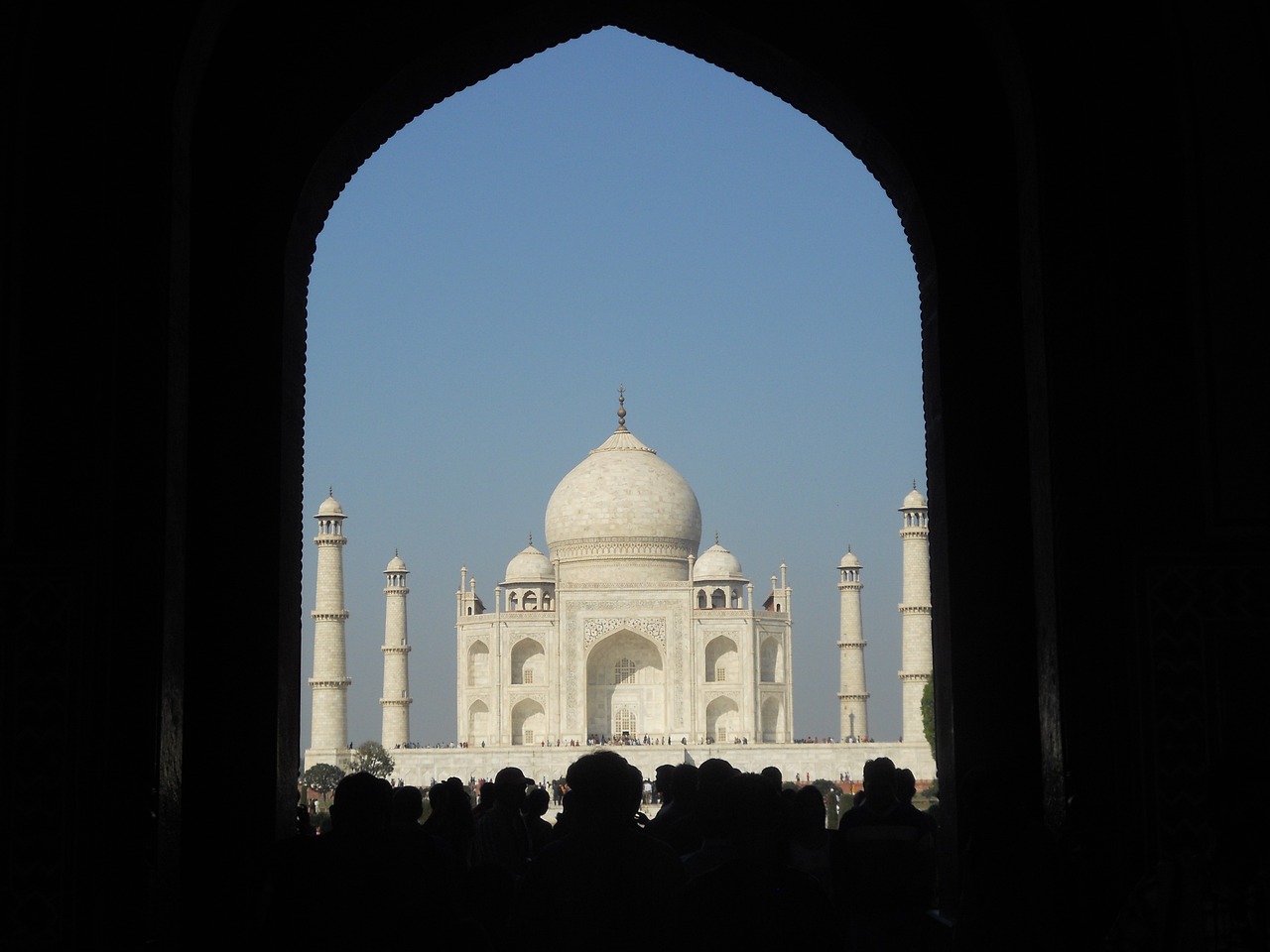
Fatehpur Sikri
Fatehpur Sikri is a fortified city located near Agra. It was built by Emperor Akbar in the late 16th century and served as the capital of the Mughal Empire for a short period. The city showcases a unique blend of Mughal, Persian, and Hindu architectural styles.
- Key Features: Buland Darwaza, Jama Masjid, Panch Mahal, Diwan-i-Khas, Jodha Bai Palace
- The Buland Darwaza, or Gate of Magnificence, is the main entrance to Fatehpur Sikri and is considered one of the finest examples of Mughal architecture.
- The Jama Masjid is one of the largest mosques in India and showcases intricate marble and sandstone work.
- The Panch Mahal is a five-story palace with a unique architectural design, featuring a gradually decreasing number of columns on each level.
- The Diwan-i-Khas, or Hall of Private Audience, was used by the emperor for private discussions.
- The Jodha Bai Palace is a magnificent palace built for Akbar’s Hindu wife, showcasing a fusion of Islamic and Hindu architectural elements.
Agra India Image 2: 
Itmad-ud-Daulah’s Tomb
Itmad-ud-Daulah’s Tomb, also known as the Baby Taj, is a Mughal mausoleum located on the banks of the Yamuna River. It was built by Nur Jahan, the wife of Emperor Jahangir, for her father Mirza Ghiyas Beg. The tomb is often considered a precursor to the Taj Mahal and showcases exquisite marble work and delicate inlay designs.
- Key Features: Marble lattice screens, delicate inlay work, beautiful gardens
- The tomb features intricate marble lattice screens, known as jali, which allow sunlight to filter through and create beautiful patterns.
- The delicate inlay work, known as pietra dura, showcases floral motifs and intricate designs.
- The surrounding gardens provide a tranquil setting and enhance the beauty of the tomb.
Mehtab Bagh
Mehtab Bagh, also known as the Moonlight Garden, is a charbagh complex located across the Yamuna River from the Taj Mahal. It was built by Emperor Babur and offers stunning views of the Taj Mahal from its perfectly aligned gardens.
- Key Features: Charbagh layout, reflecting pool, pavilions
- The charbagh layout features a quadrilateral garden divided into four equal parts by walkways and water channels.
- A reflecting pool in the center of the garden creates a mirror-like effect, reflecting the Taj Mahal.
- Pavilions at each corner of the garden provide shaded areas for visitors to relax and enjoy the view.
Agra India Image 3: 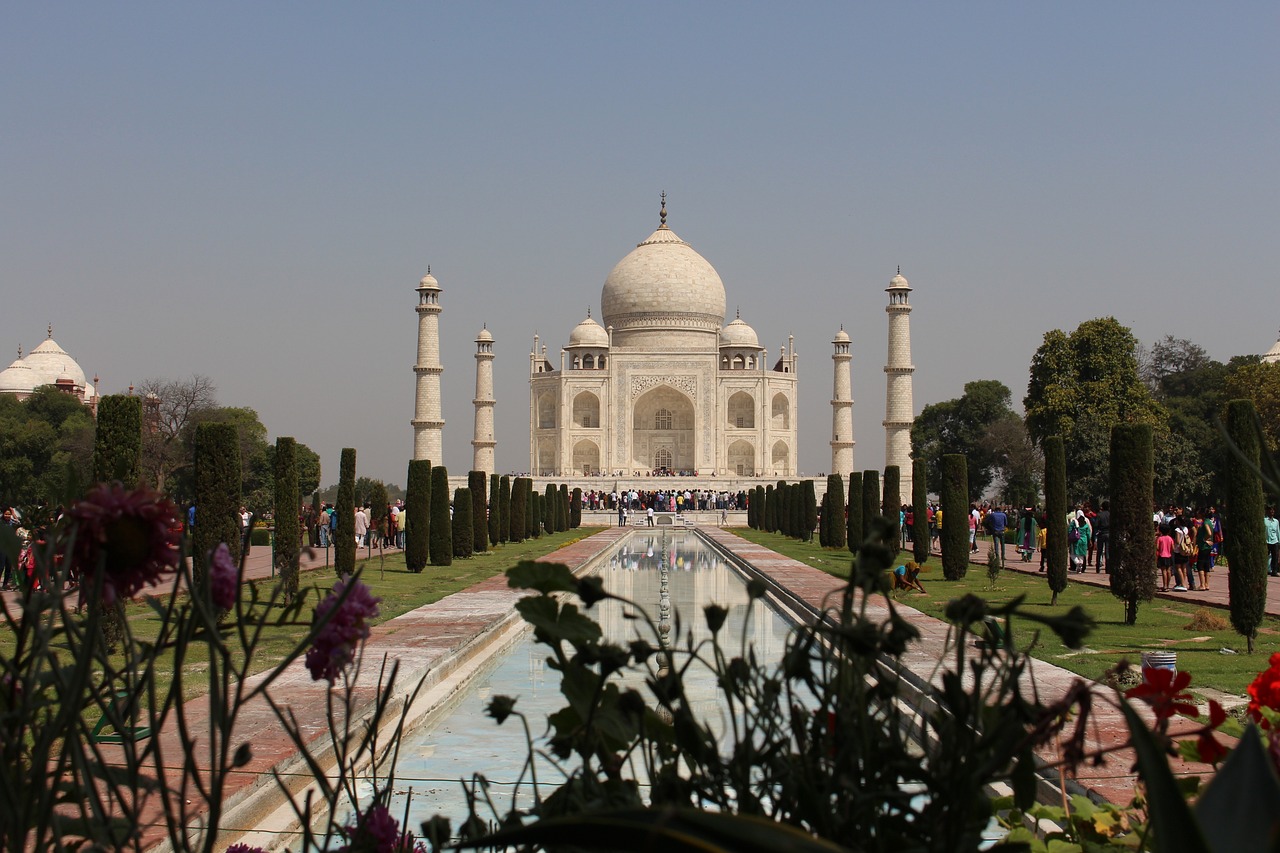
Moti Masjid
Moti Masjid, also known as the Pearl Mosque, is a beautiful mosque located inside the Agra Fort. It was built by Emperor Shah Jahan in the mid-17th century and is made entirely of white marble. The mosque is known for its elegant architecture and serene atmosphere.
- Key Features: White marble construction, domes, minarets
- The mosque is made entirely of white marble, giving it a pristine and ethereal appearance.
- The domes and minarets of the mosque add to its grandeur and architectural beauty.
Chini Ka Rauza
Chini Ka Rauza is a mausoleum located near the Itmad-ud-Daulah’s Tomb. It was built for Allama Afzal Khan Mullah, a Persian scholar and poet, during the reign of Emperor Shah Jahan. The mausoleum showcases exquisite Persian-style architecture and intricate tile work.
- Key Features: Persian-style architecture, colorful tile work, calligraphy
- The mausoleum features Persian-style architecture, with intricate arches, domes, and ornamental details.
- The colorful tile work on the exterior walls adds vibrancy and beauty to the structure.
- Calligraphy from Persian poetry is prominently displayed on the walls, showcasing the cultural significance of the mausoleum.
Jama Masjid
Jama Masjid is a historic mosque located in the old city of Agra. It was built by Emperor Shah Jahan in the mid-17th century and is one of the largest mosques in India. The mosque showcases impressive Mughal architecture and is a popular place of worship for Muslims in Agra.
- Key Features: Red sandstone construction, domes, minarets, courtyard
- The mosque is made of red sandstone, giving it a striking appearance against the blue sky.
- The domes and minarets of the mosque are intricately designed and add to its architectural beauty.
- The spacious courtyard can accommodate a large number of worshippers during prayer times.
Conclusion
Agra, India, is home to some of the world’s most iconic buildings and architectural wonders. From the majestic Taj Mahal to the historic Agra Fort and the exquisite Itmad-ud-Daulah’s Tomb, each structure showcases the rich history and cultural heritage of the Mughal Empire. Visitors to Agra are captivated by the intricate detailing, grandeur, and beauty of these iconic buildings. Whether exploring the UNESCO World Heritage Sites or wandering through the serene gardens, Agra’s architectural wonders leave a lasting impression on all who visit.
References
- architecturaldigest.in
- unesco.org
- lonelyplanet.com
- culturalindia.net

